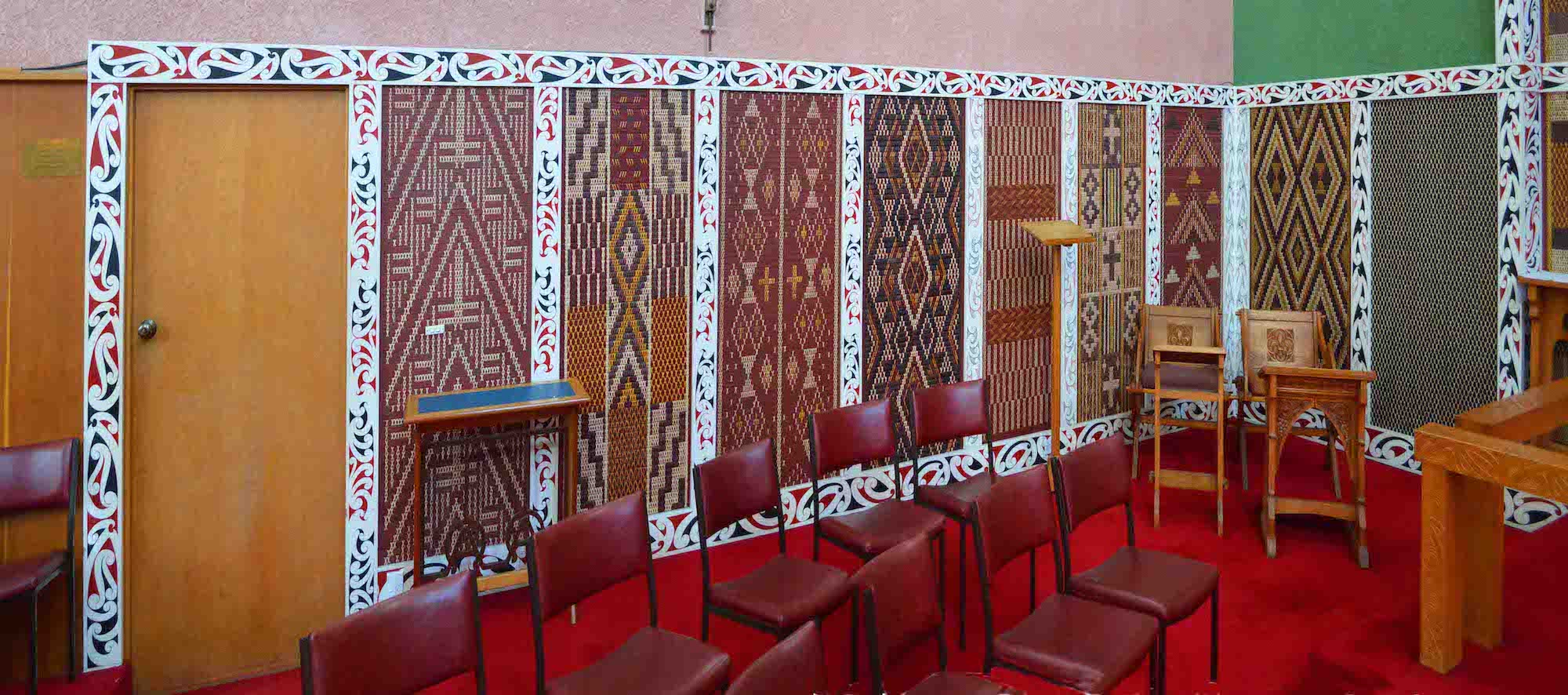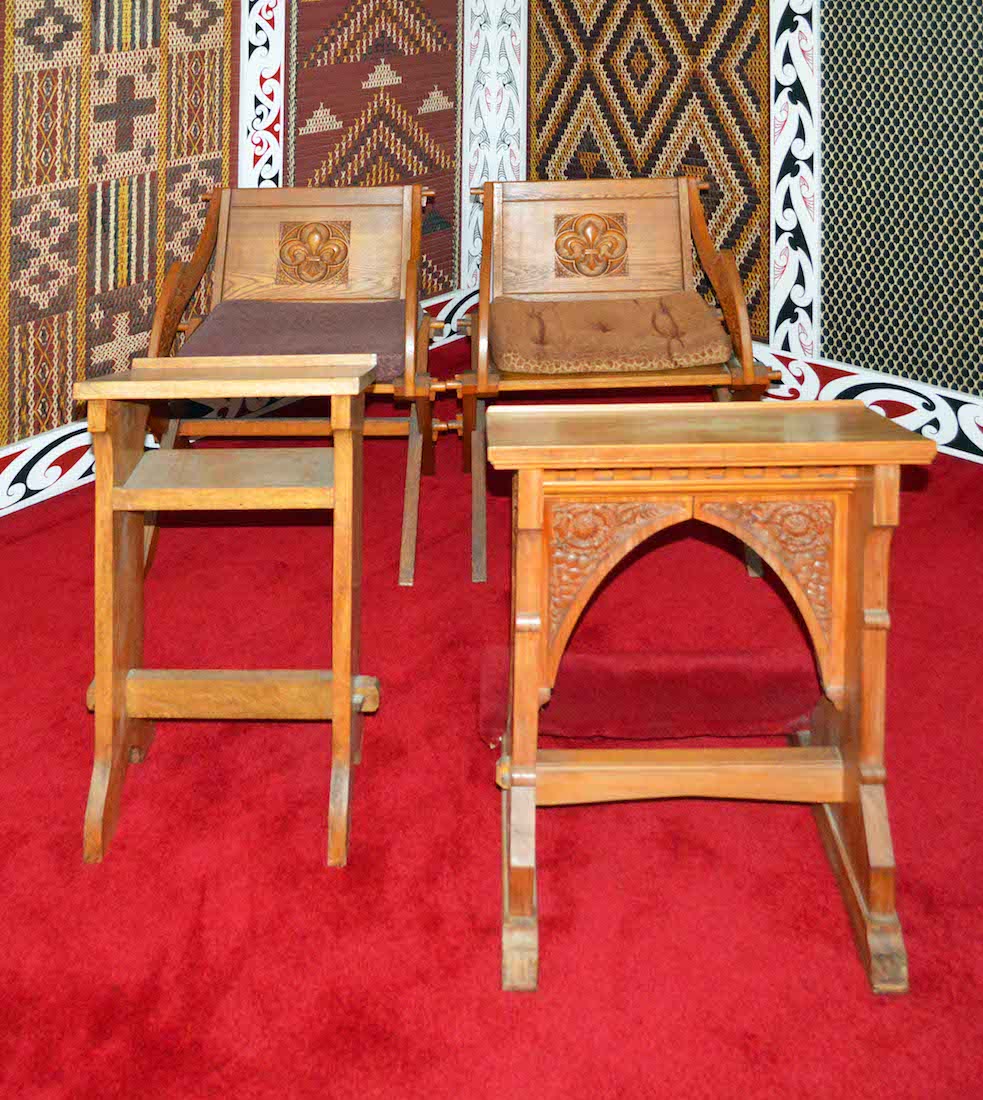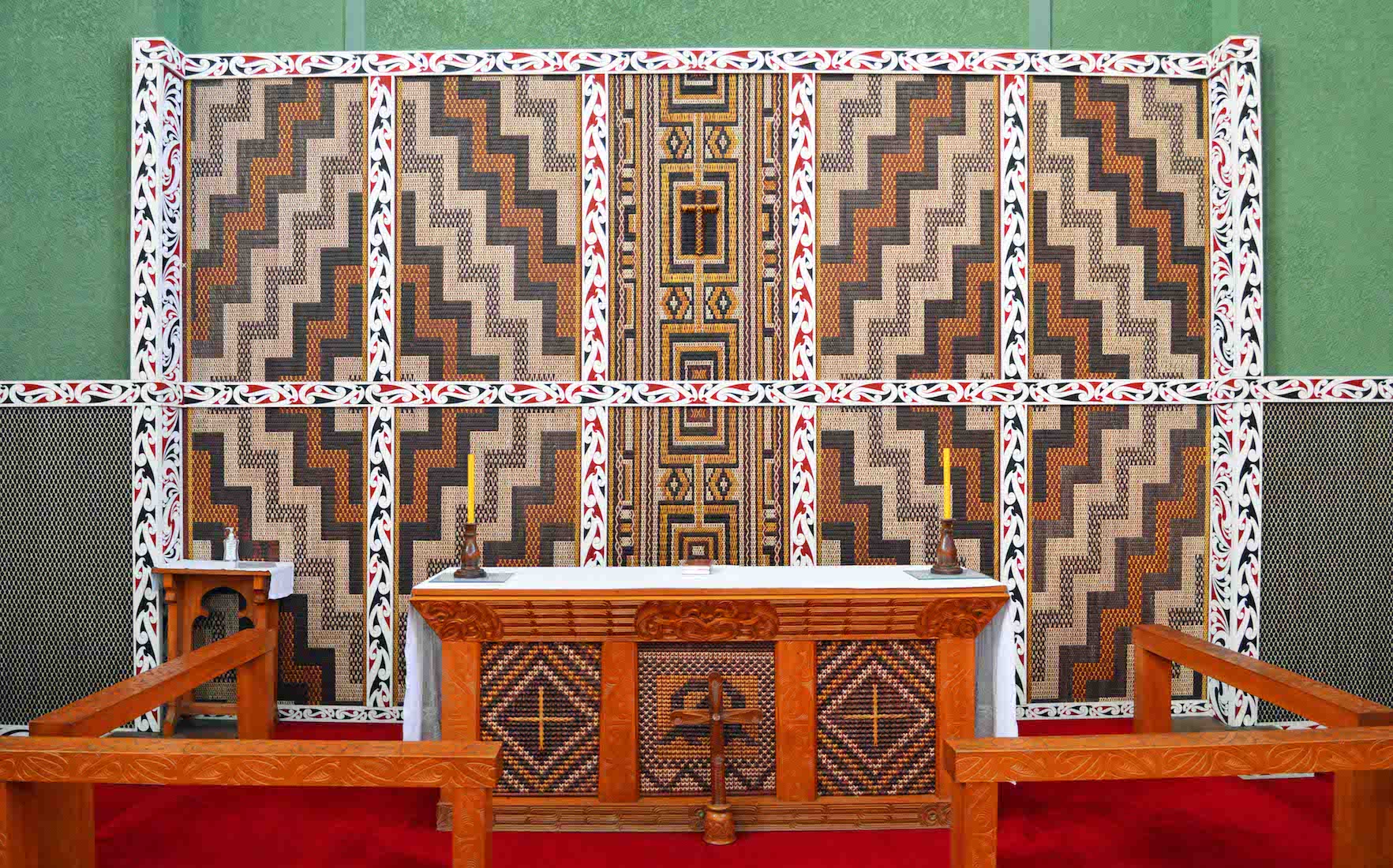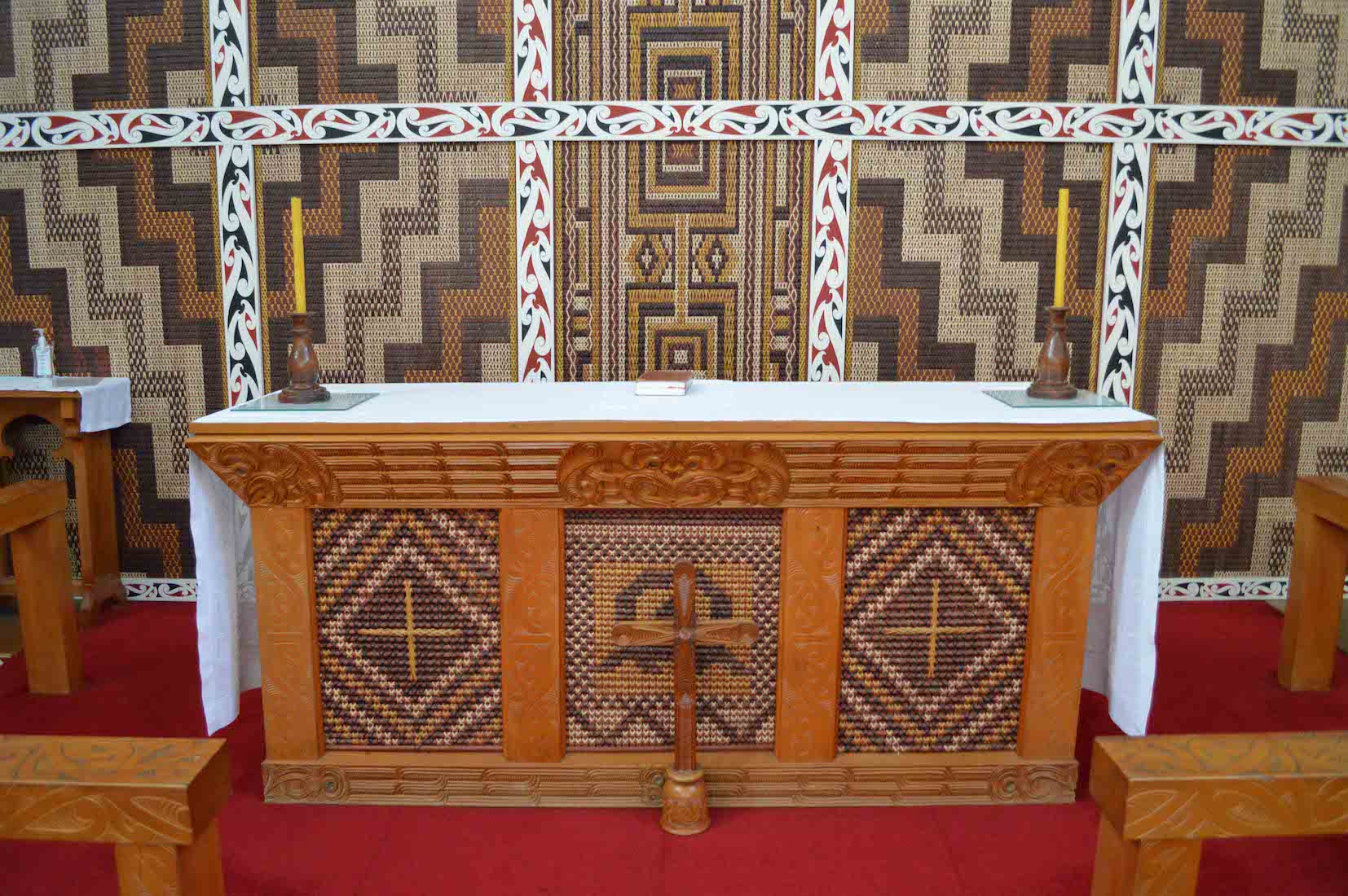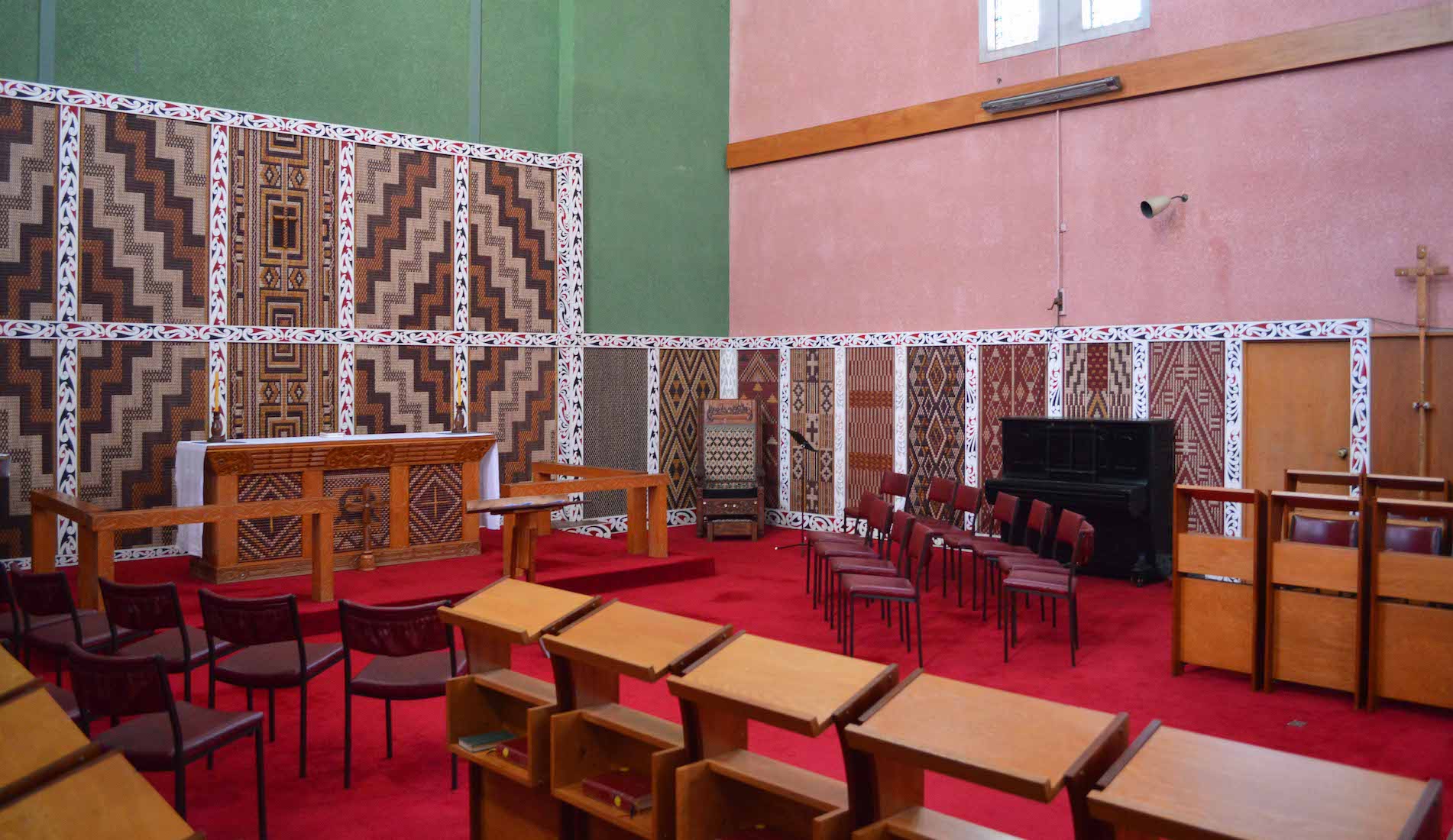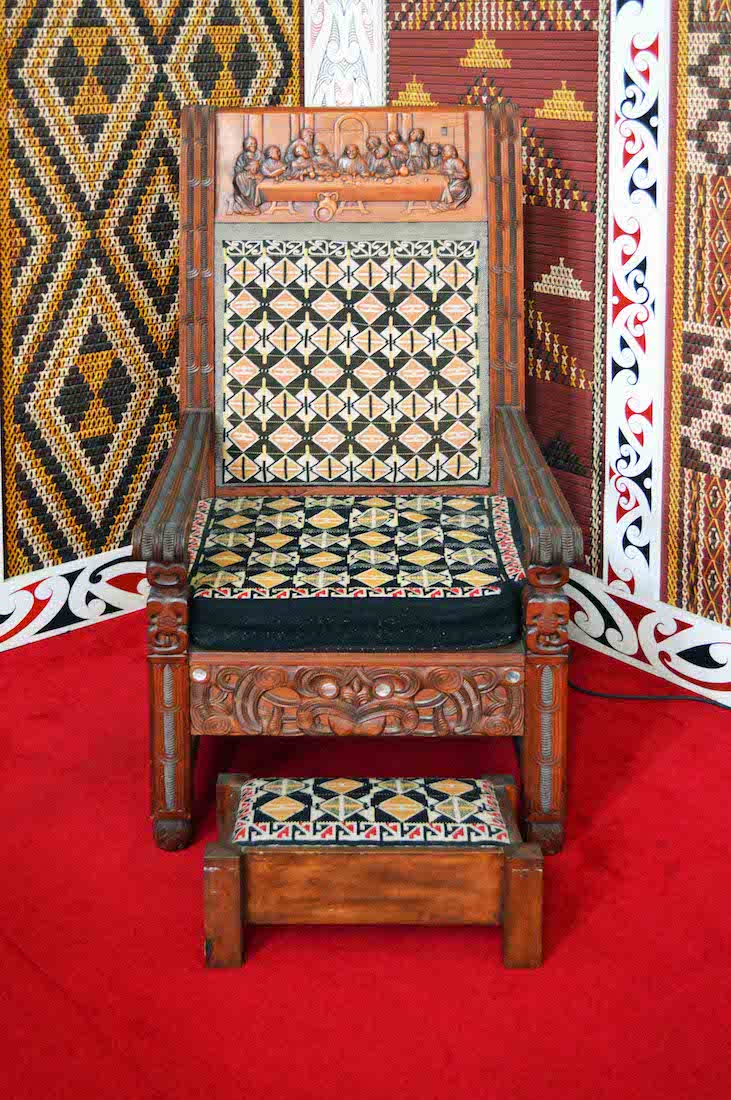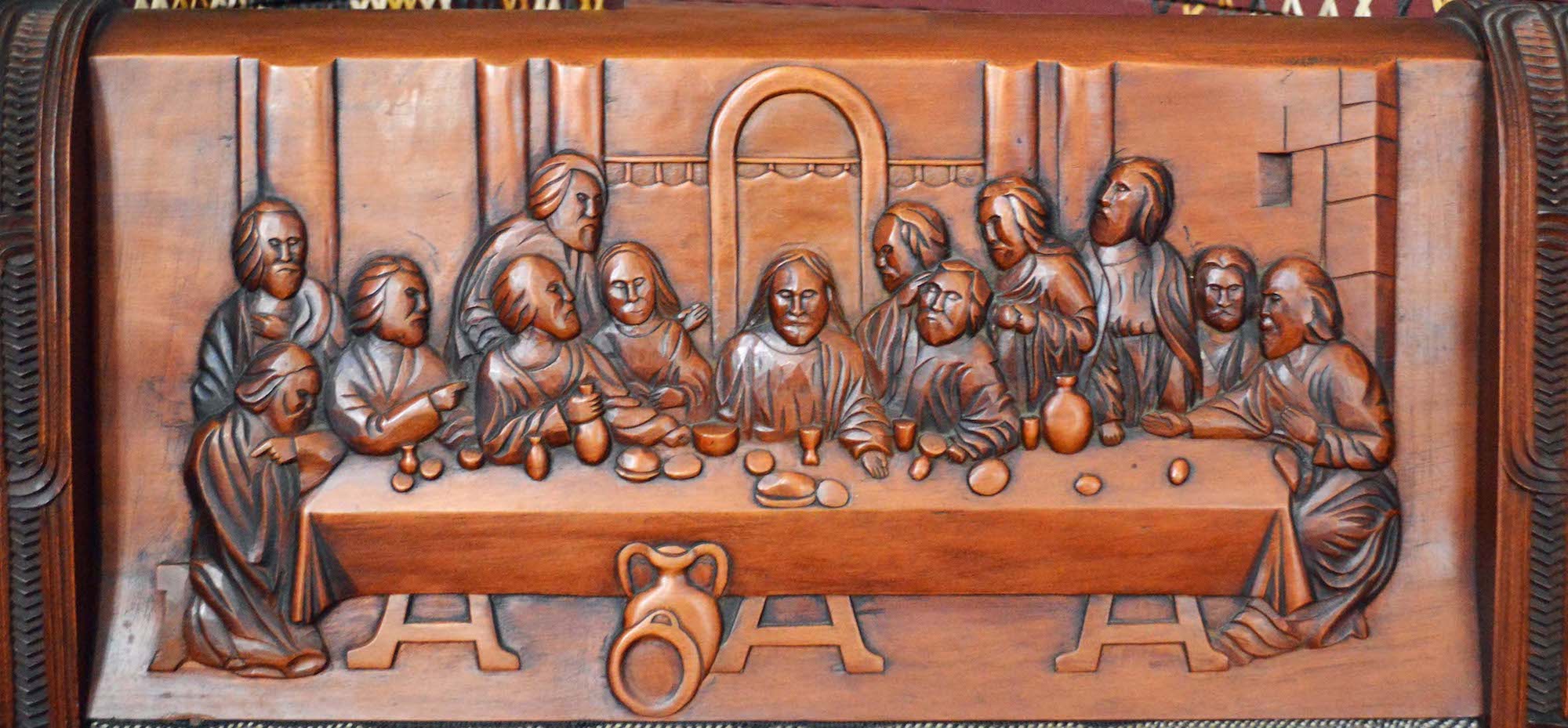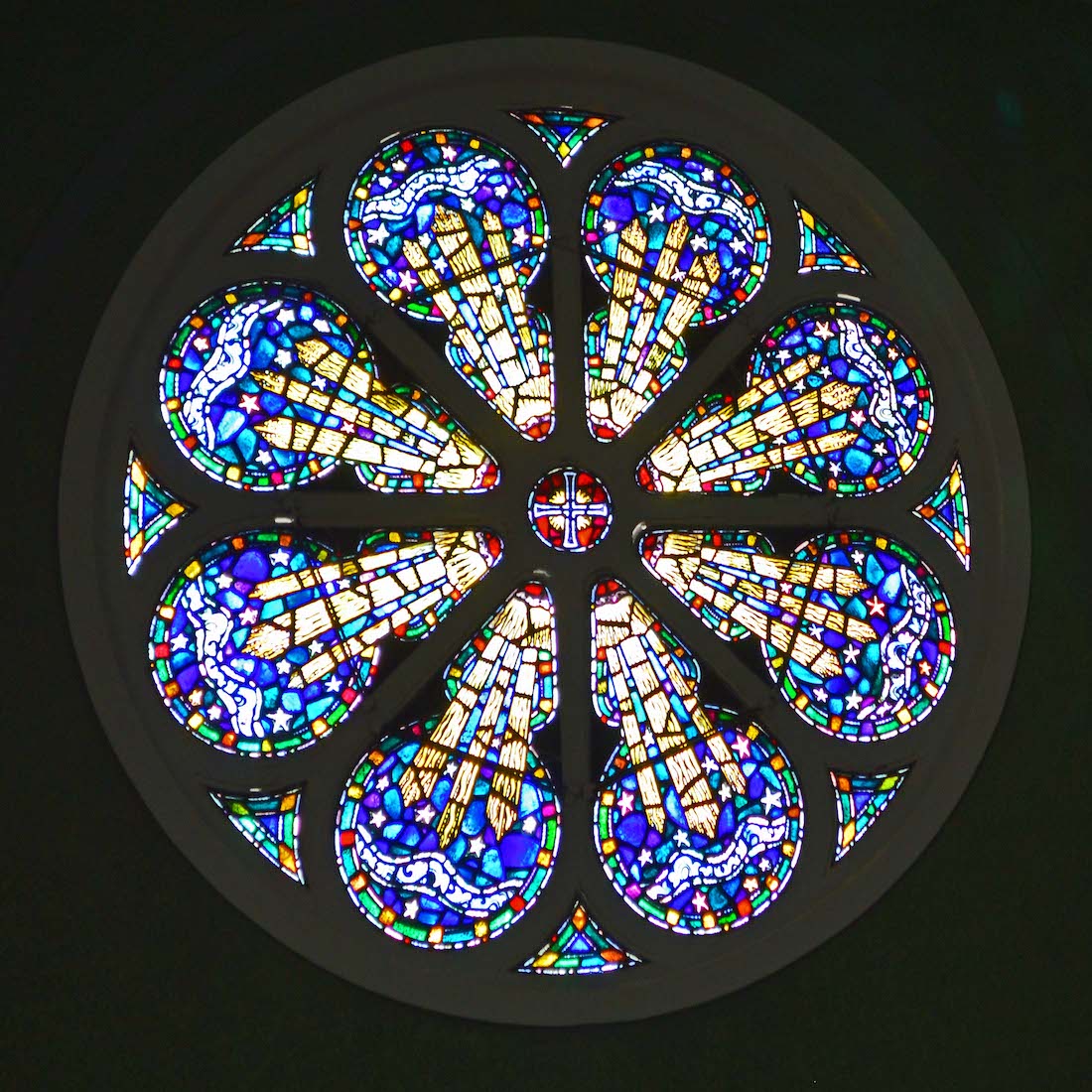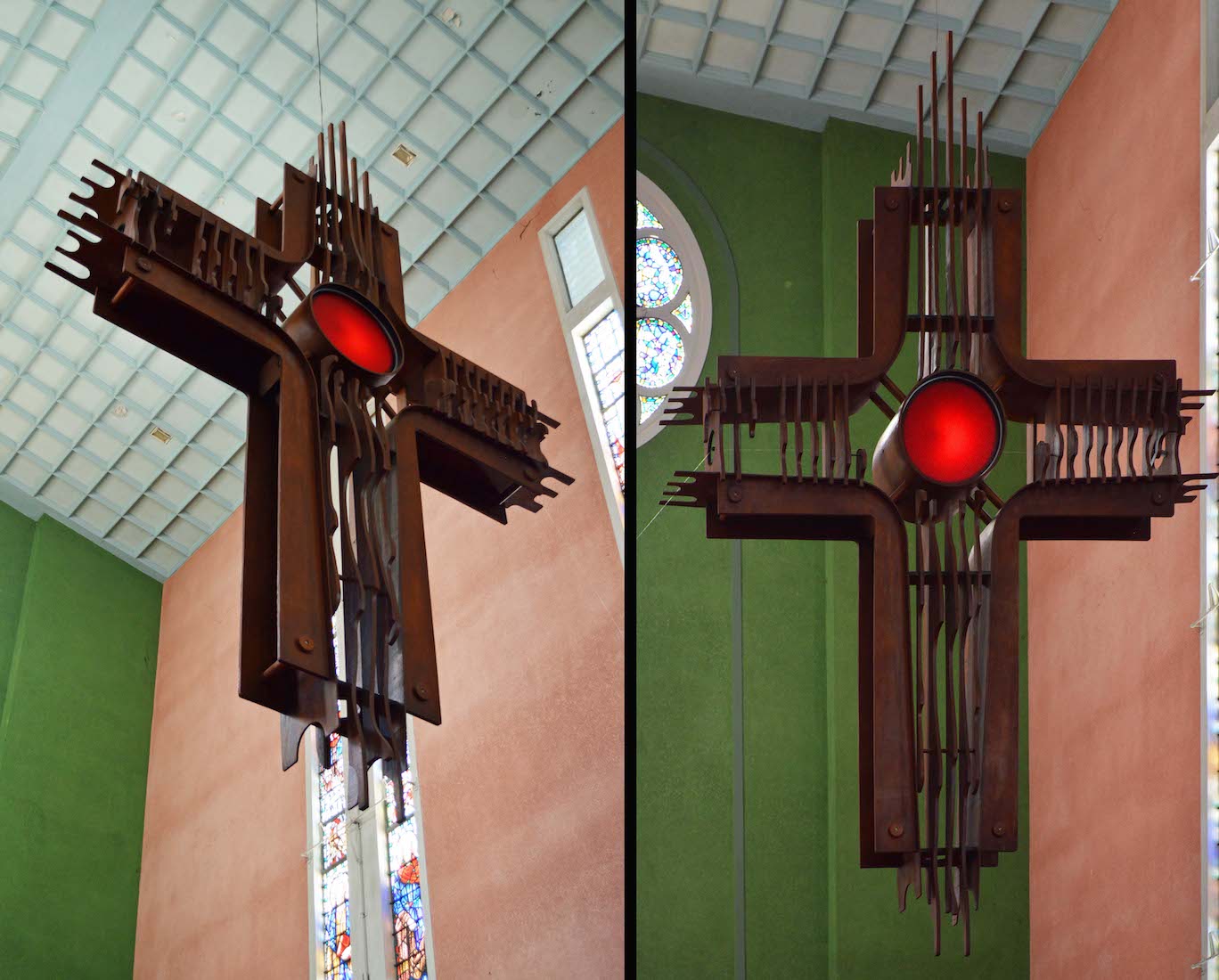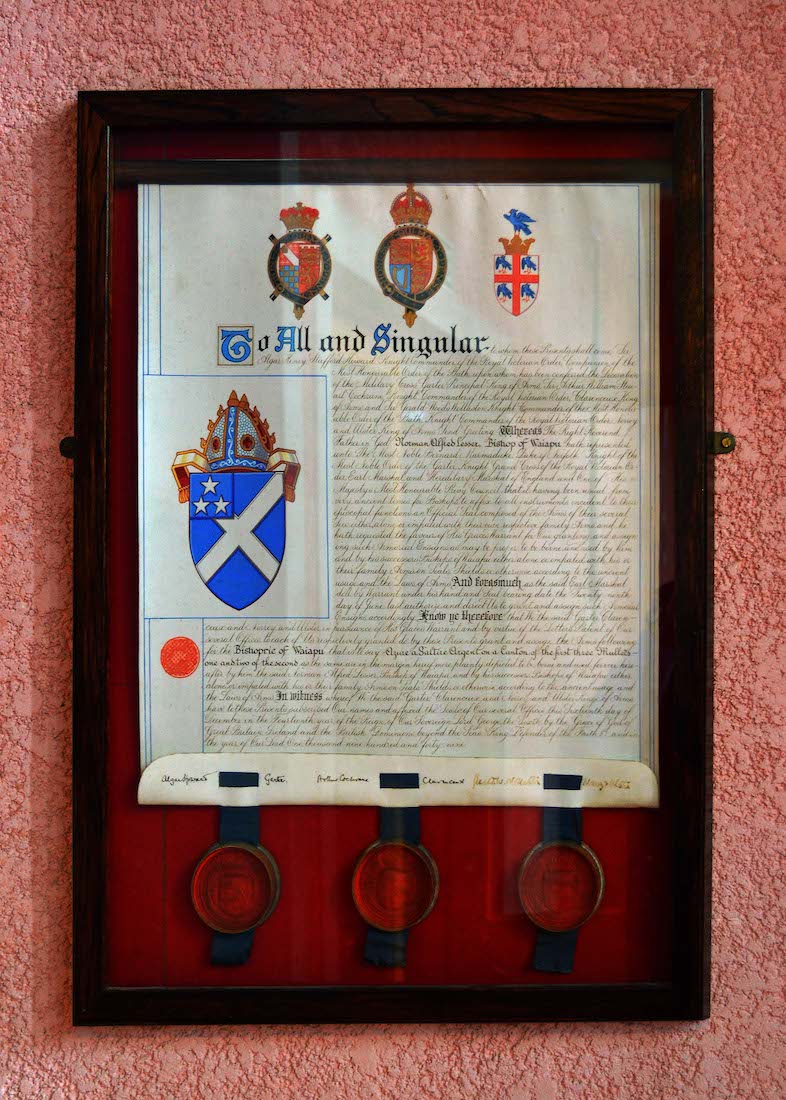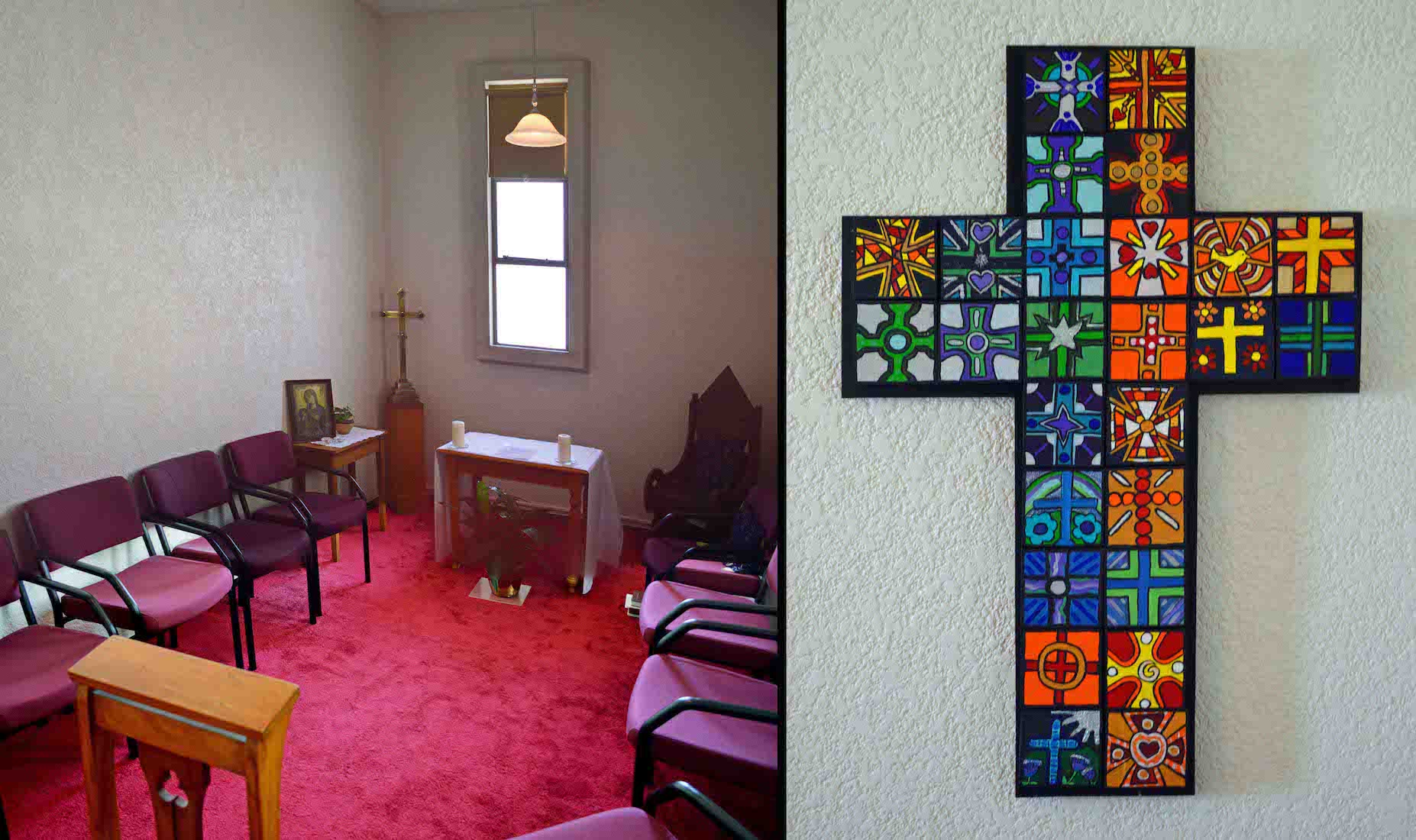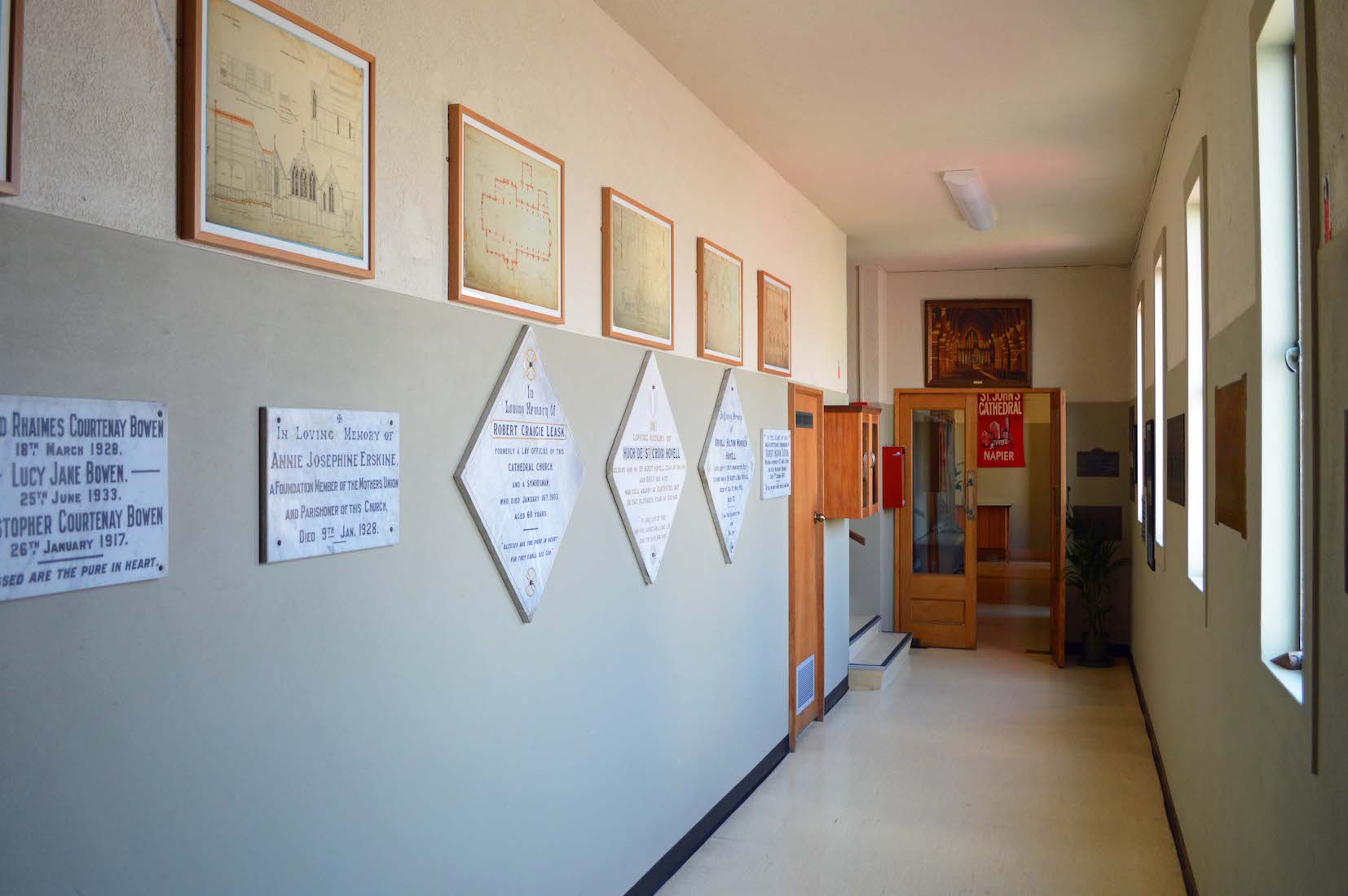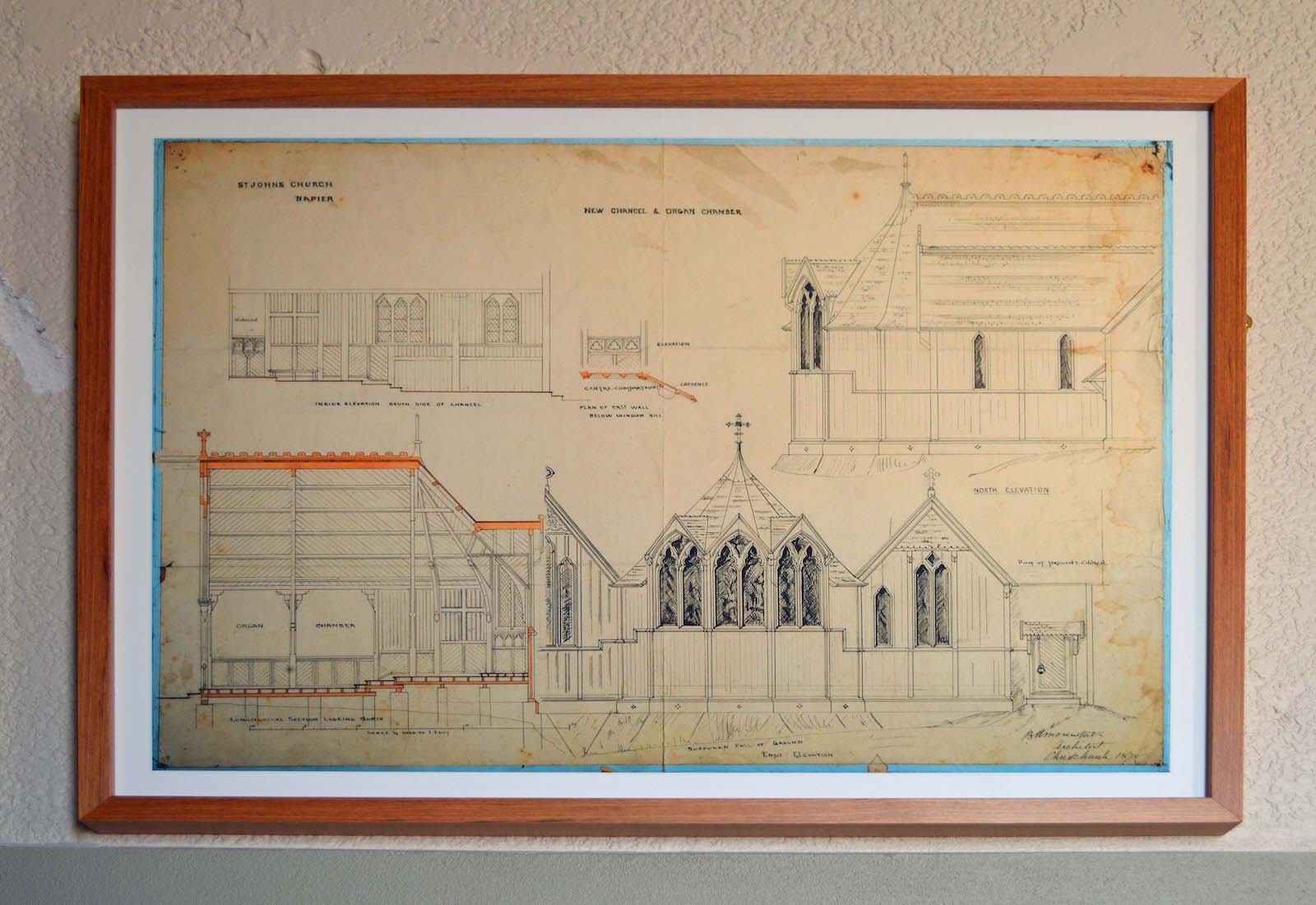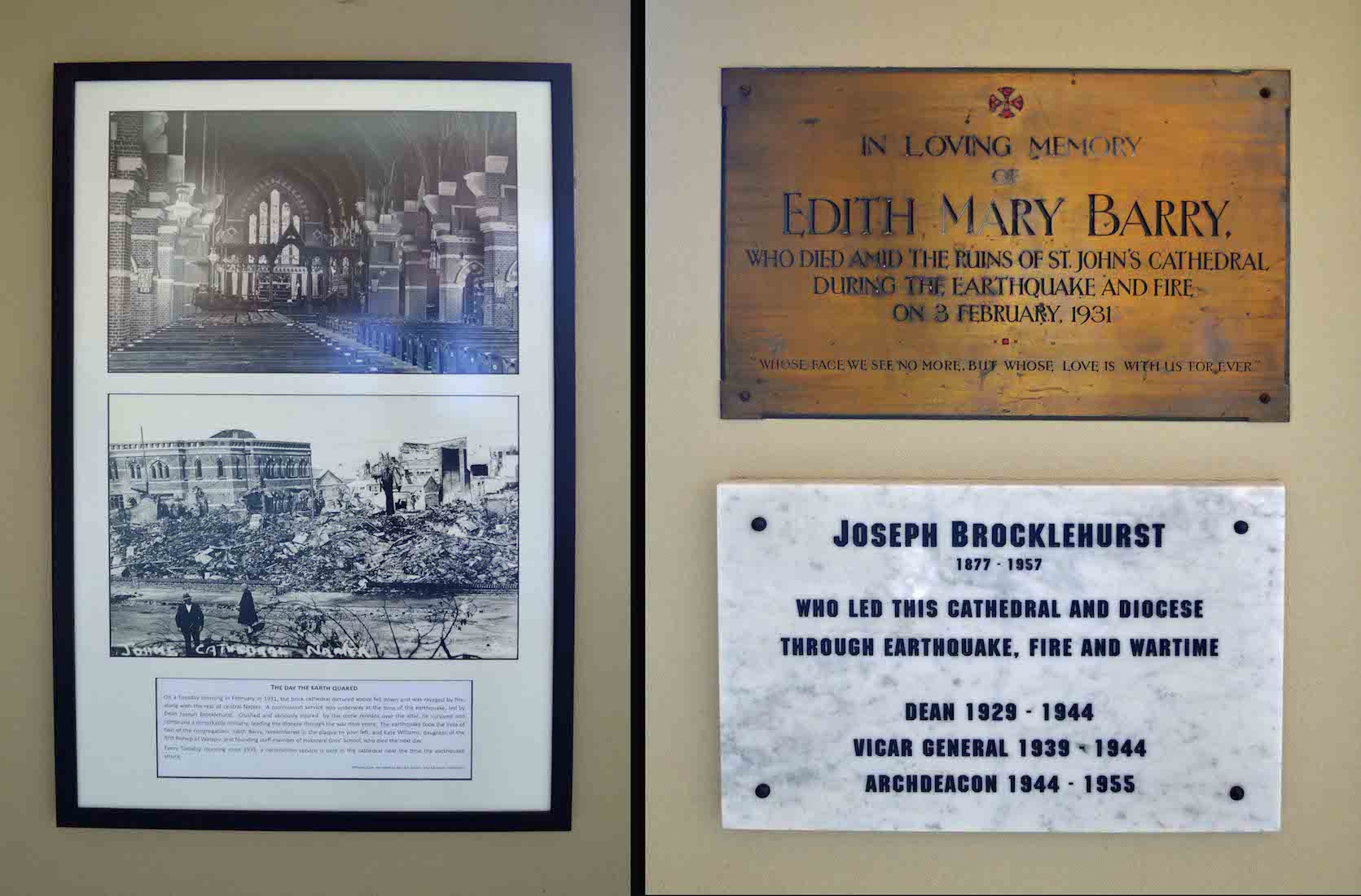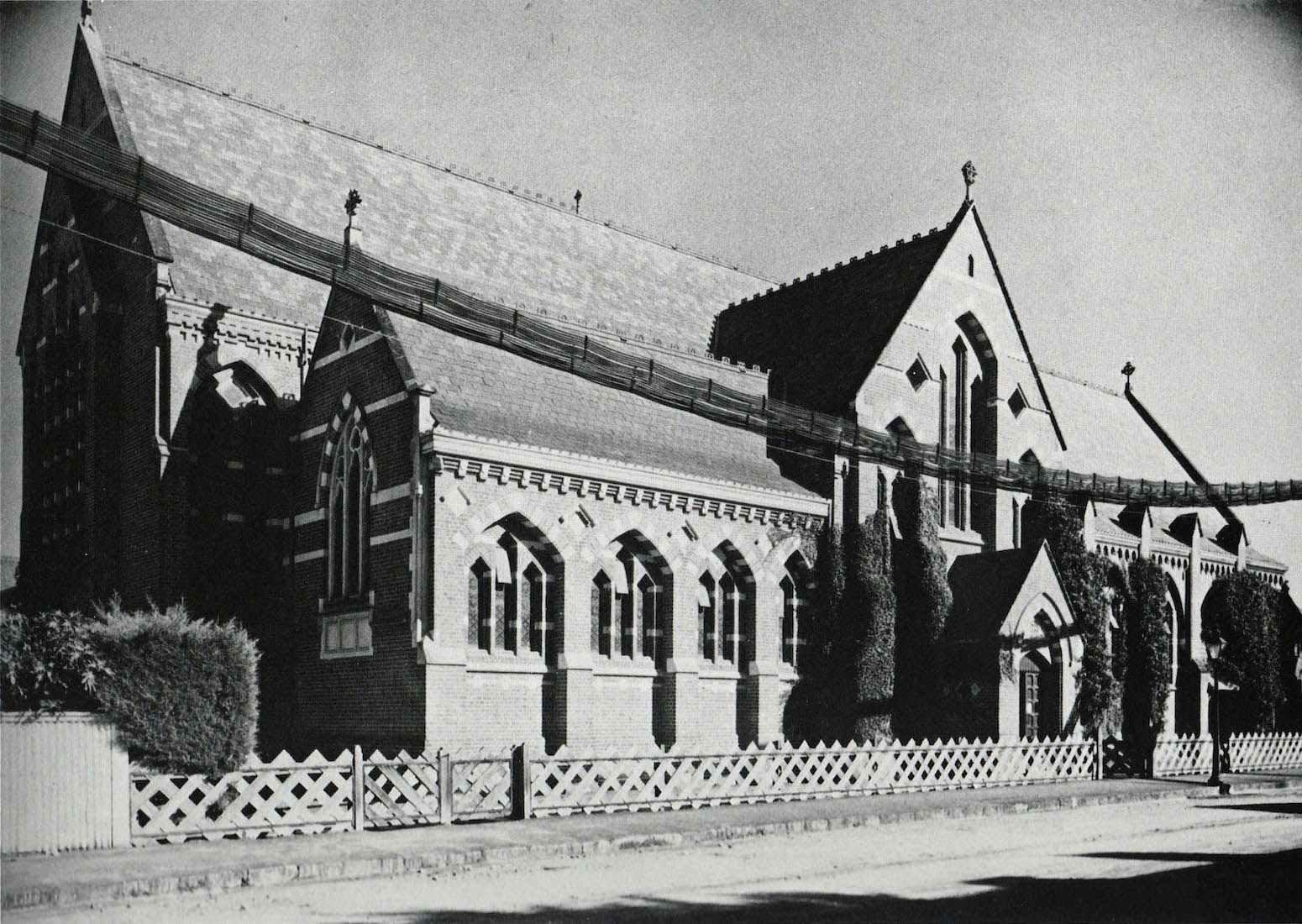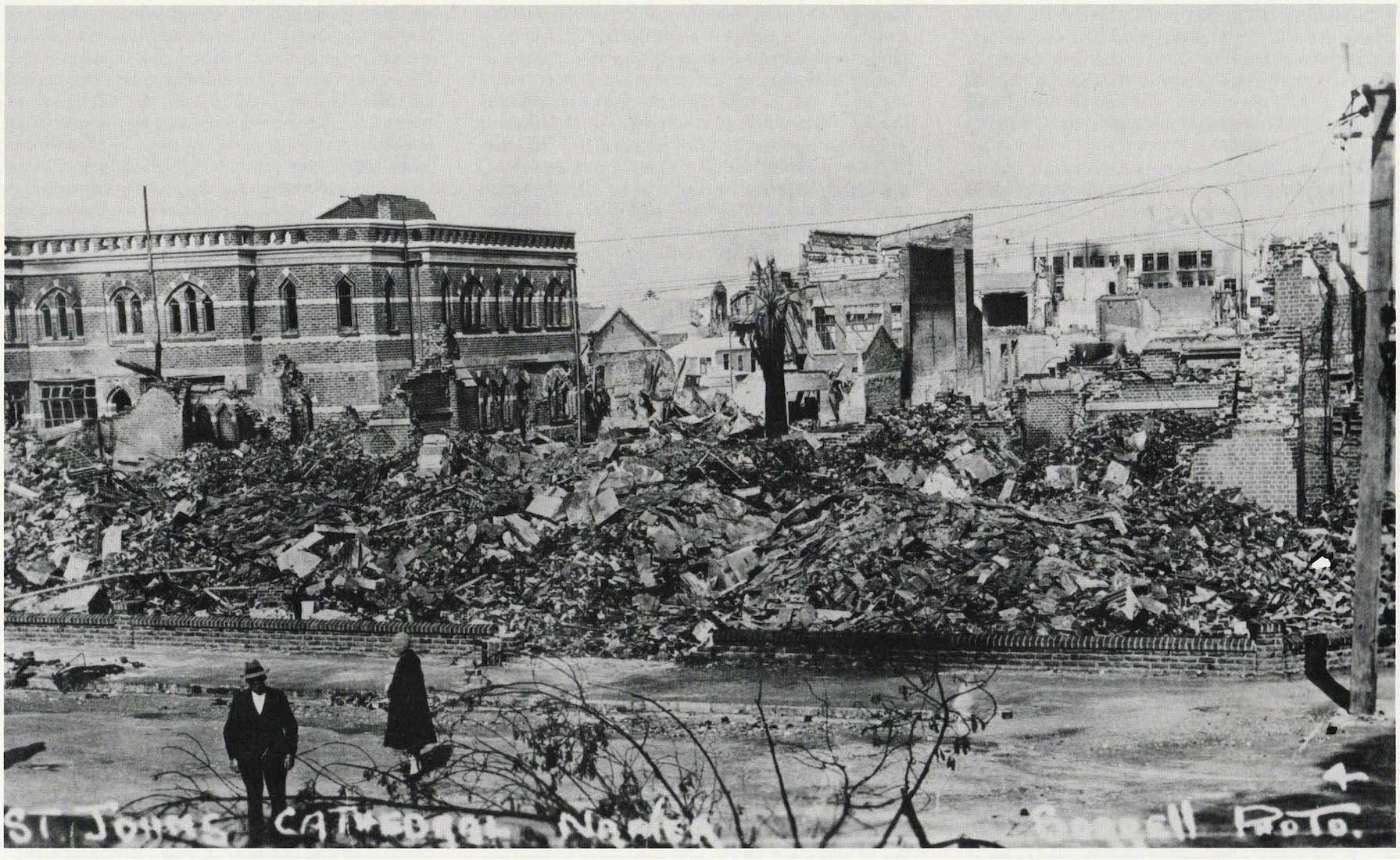62. CATHEDRA
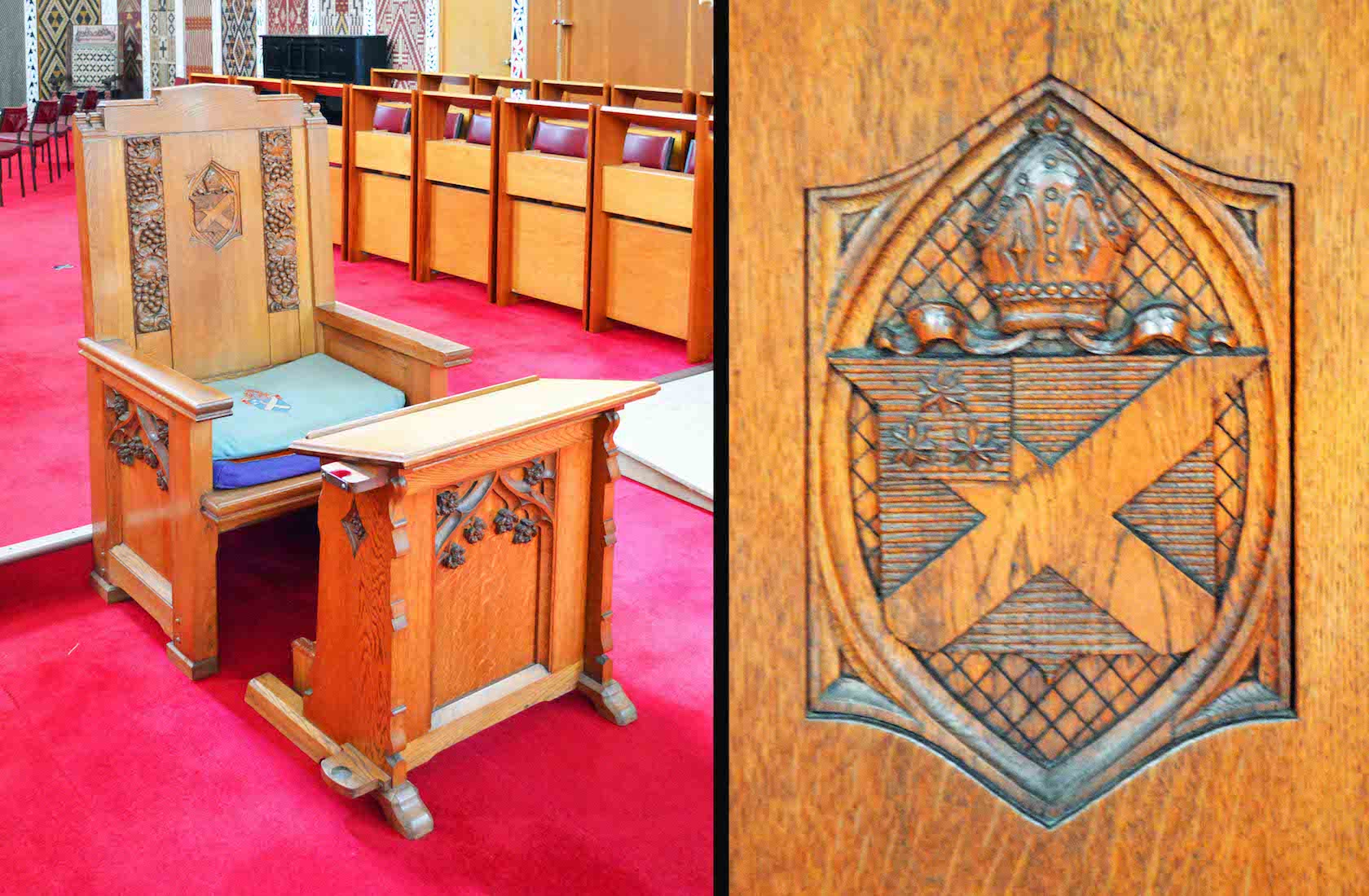
Cathedrals take their name from the ‘cathedra’ – the chair of the Bishop. The chair in this Cathedral is made of oak and was carved for the wooden church built after the earthquake. It is carved with the Diocesan coat of arms. The Eagle of St John is embroidered on the Cathedra cushion. [28]
63. SANCTUARY WINDOWS
These stained glass windows depict six of the apostles. From left these are: St Philip; St James and St John (Worthy is the Lamb); St Peter (Feed my sheep) and St Andrew (I will make you fishers of men); St Bartholomew (Rabbi, thou art the Son of God). [21]
65. MĀORI CHAPEL CHAIRS
These carved chairs and desks stand in the North Eastern corner of the Māori Chapel.
66. CHAPEL EAST WALL
The Tukutuku Panelling was woven by the Māori pastorates of the Diocese. They depict the styles and traditions of the various tribal areas and are of spiritual significance. [24]
67. MĀORI CHAPEL ALTAR
The Māori Chapel altar and altar rails were carved by John Taiapa of Rotorua. [25]
68. MĀORI CHAPEL SOUTH
The panelling on the South side appears to reflect that on the North, but there is an interesting chair in the corner. At extreme right is the Jeremy Wickham Memorial Cross, symbolizing unity under Christ. [27]
69. THRONE
This Throne of the Bishop of Aotearoa is carved in totara by John Taiapa, and portrays the Last Supper. The taniko work is by Lady Ngata, wife of Sir Apirana Ngata. [26]
70. THRONE DETAIL
This beautifully carved scene is a distinctly Mãori portrayal of the Last Supper.
71. ROSE WINDOW
The rose window sits high in the Eastern gable. With the Cross at the centre, it depicts a sunburst of light reaching out to the stars. [22]
72. CROSS
The Cross above the altar was designed and made of wood and glass by Brian Grouden of Havelock North, in 1975. The red centre suggests the eternal presence of God (suggestive of a sanctuary light). Viewed from the front, the Cross appears empty; from the side, the outline of the crucified Christ is suggested. [17] This completes our tour of the Cathedral. But there is a little more ...
73. CATHEDRAL ARMS
This declaration about the Cathedral Arms is found on the stair wall up to the gallery. [7]
74. CHAPEL CROSS
Near the gallery stairs is this little meeting room / chapel. Of particular note is the decorated cross on the wall – shown at right.
76. FIRST CATHEDRAL
This old photograph shows the character and grandeur of the interior of the first Cathedral.
77. HISTORIC PLANS
These are the plans for the new chancel and organ chamber of the first Cathedral.
78. PHOTOS AND PLAQUES
Some historic photographs and memories of the earthquake and its consequences.
79. THE FIRST CHURCH
We conclude our study of Waiapu Cathedral with a sequnce of historic photographs. These are taken from the excellent Cathedral booklet ‘The Resurrection and the Life’ by S. W. Grant. This is the first Church of St John the Evangelist, completed in 1862. It occupied a site to the rear of the present Cathedral.
80. THE OLD CATHEDRAL
This is an exterior view of the first Cathedral which was designed by B. W. Mountfort of Christchurch. Some warnings about the danger of building in brick were unfortunately ignored.
81. THE ’QUAKE
The 1931 Napier earthquake destroyed the Cathedral, along with virtually the whole of the Napier business district. Napier is now famous for its art-deco architecture: the result of extensive rebuilding after the earthquake.
82. THE PRO-CATHEDRAL

After the destruction of the first Cathedral, a wooden Pro-Cathedral with galvanized iron roof was erected on the Cathedral site. It was dedicated by Rt Rev H. W. Williams on 18 October 1932.
83. THE NEW CATHEDRAL RISES
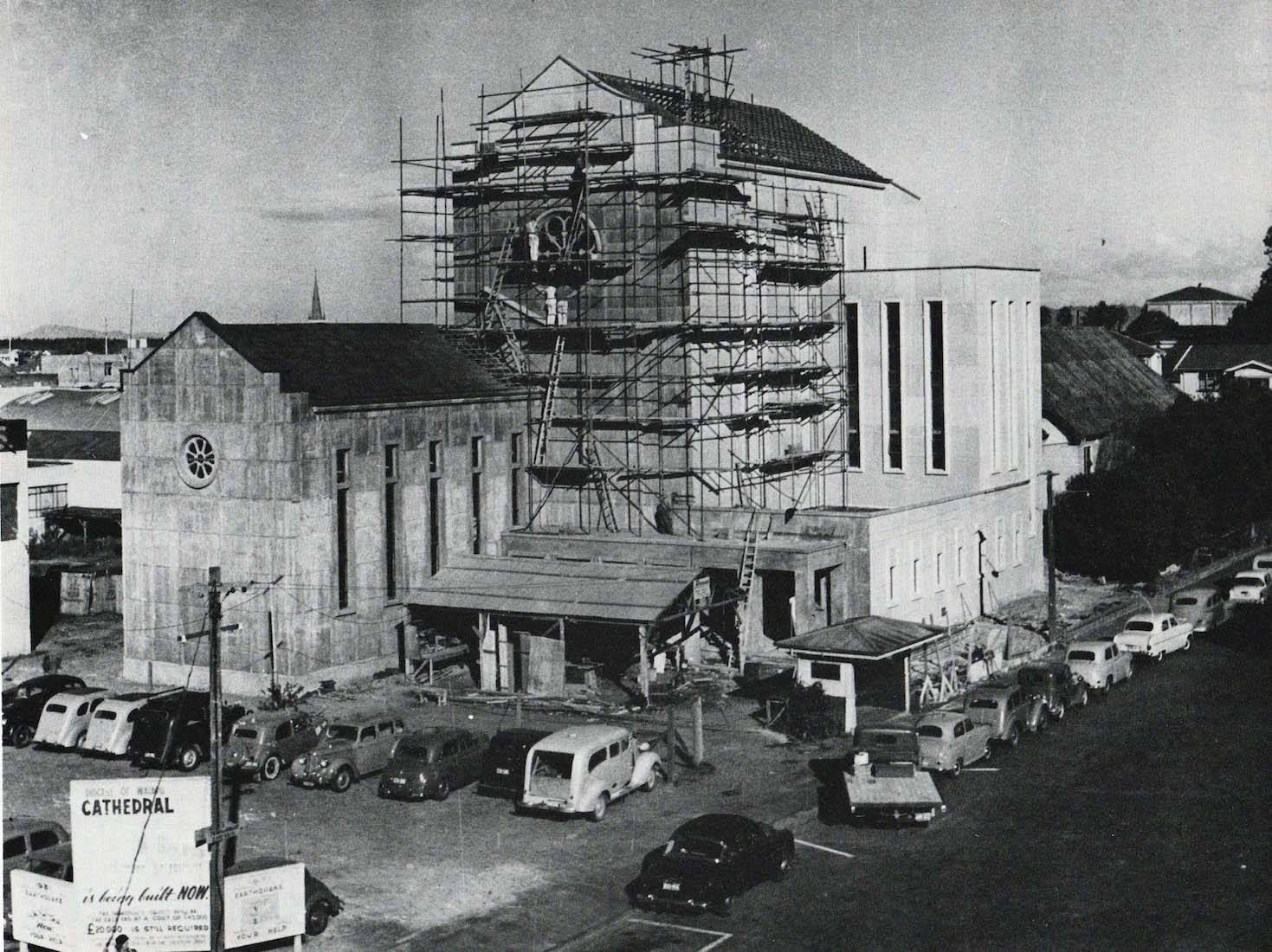
From the rubble the second Cathedral of St John the Evangelist rises. Notices concerning an appeal for building funds are in the left foreground. [END]

CONCLUSION
I hope you have enjoyed visiting Waiapu Cathedral, Napier with me. I regard Napier as my ‘home town’, and have been quite fascinated to have a close look at this interesting Cathedral. A Cathedral built out of disaster and tragedy must have unique defining characteristics. As well, I am related to the Davis family, and Peter and Lilian Tait were family friends – all mentioned in this account as builders and supporters of this Cathedral.
I am happy to receive constructive comments or corrections concerning this website. The best websites are the ones which have no errors! I am grateful to my wife Margie who came to New Zealand with me, and who has proof-read these pages.
Much of the text on this site comes from the excellent Cathedral publications: ‘Guide to Waiapu Cathedral’, ‘Waiapu Cathedral’, and ‘The Resurrection and the Life’ by S.W. Grant. I am happy to acknowledge these sources.
The link for the Cathedral website is:
http://www.napiercathedral.org.nz/
My photographs which appear on this site can also be found in higher resolution at:
https://www.flickr.com/photos/paulscottinfo/sets/
Paul Scott Site created 03 / 2015 ; reformatted 07 / 2020 .



